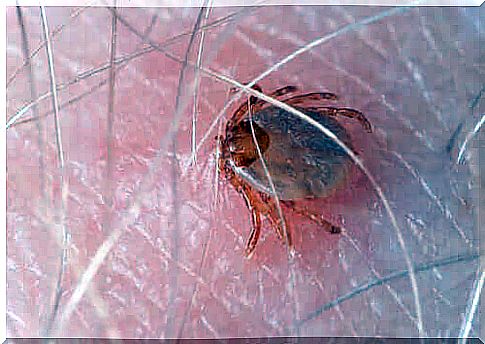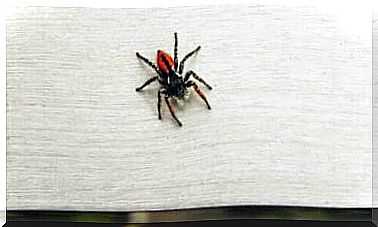Spotted Fever Transmitted By Ticks

Caused by a microbe present in ticks, spotted fever is an endemic zoonosis in the United States, although cases also exist in the rest of the Americas. Learn more about her in this article.
What is spotted fever?
The bacterium Rickettsia rickettsii is the microorganism ‘responsible’ for the occurrence of the disease known in the United States as Rocky Mountain Spotted Fever, because it appeared in the forest areas of that country.
It is the most severe fever with rash in the entire West, and its transmission vector is the tick. Although there are antibiotic treatments for this disease today, in 1/5 of cases it is not diagnosed in time, which can cause widespread acute infection and even death.
Rocky Mountain spotted fever is more common in children and adult men living in the United States. The incidence of the disease is higher when the person is exposed to animals or pets that have ticks, as is often the case in shelters.
Contagion and main symptoms
The disease spreads when an infected tick bites a person. It can also be transmitted when there is contact with the blood or feces of a sick parasite. There is no contagion between human beings.

For the microbe Rickettsia rickettsii to enter the human body, it is ‘necessary’ that the infected tick stays in contact with the skin for a period of four to six hours. This can happen overnight without us realizing it.
The bacteria enter the cells of your ‘host’ and the first symptoms of Rocky Mountain spotted fever can appear as early as two weeks after the bite. The illness is characterized by a sudden high fever that can last for several weeks.
Other signs of infection are severe headaches, severe muscle pain, fatigue, chills and rash in the form of red patches on the skin. These appear on the legs and arms, although they also spread to the palms of the hands and soles of the feet, as well as the trunk and the rest of the body.
There are some less frequent manifestations in people who are not treated in time, such as an enlarged spleen or liver, disseminated intravascular clotting – sometimes fatal – and a decrease in the number of platelets in the blood.
The treatment of Rocky Mountain spotted fever includes antibiotics such as chloramphenicol and tetracycline.
How to prevent Rocky Mountain spotted fever?
It is essential to avoid all places where ticks can proliferate: forests and gardens with lush grass, animal breeding sites, animal shelters or even houses with lots of dogs in a small space.

If for some reason you go to any of these places, you can avoid tick bites by wearing long pants tucked into your socks, or by wearing shoes and long-sleeved shirts tucked into your pants. Another very effective option would be to use insect repellents.
Every two or three hours outdoors, or in places with many dogs, it is necessary to check that there are no ticks attached to clothing and skin. If this happens, it is necessary to take precautions to remove it: we must hold the body of the parasite with tweezers, as close as possible to where it is ‘attached’ to the skin.
Some people ‘wrap’ it with a cotton wool or cloth soaked in alcohol. When the tick is unable to breathe, it either breaks off on its own or can be removed more easily. If that doesn’t work, you will have to go to the hospital right away to have a doctor remove the parasite.
Spotted fever could spread to other places due to climate change and people’s mobility. Therefore, it is necessary to be prepared even outside the United States and the Americas.









